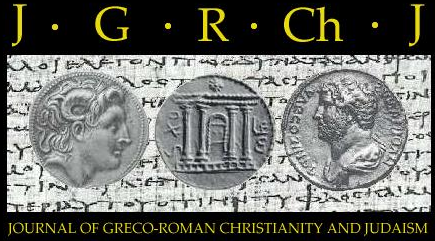
In a recently published article (full PDF linked below), I suggest a different reading in Jas 3.3a from what is found in the critical texts of NA28/UBS4 which read: εἰ δὲ τῶν ἵππων τοὺς χαλινοὺς εἰς τὰ στόματα βάλλομεν εἰς τὸ πείθεσθαι αὐτοὺς ἡμῖν, καὶ ὅλον τὸ σῶμα αὐτῶν μετάγομεν. I suggest that ἴδε instead of εἰ δὲ has both older external evidence and a better argument from internal evidence for its adoption.
This preference alters the verse from being the protasis of a conditional sentence to becoming the first of two primary clauses. The first clause then would consist of an imperative command ἴδε, ‘look’, translated traditionally as ‘behold’. In this reading the protasis and apodosis in the conditional sentence are changed to an orienter and two coordinate indicative clauses as follows: ‘Look! We put bridles into the mouths of horses so that they obey us and we guide their whole bodies.’ This is also the translation in the KJV, although the reading of the TR at this point (ἰδού) is based on only one late manuscript and is an effort to assimilate with the two occurrences of ἰδού in 3.4 and 5.1 Other manuscripts of the Alexandrian, Western and Byzantine families contain εἰ δέ, but are complicated by the unique ΕΙΔΕ ΓΑΡ in Codex Sinaiticus. The presence of the conjunction γάρ makes a rather complicated clausal structure if the previous letters are read as the conditional particle εἰ and the conjunction δέ. The complication of these readings is better understood when the practice of itacism is recognized because the diphthong ει and the letter ι were pronounced similarly in ancient times, as they are today (‘ee’). This situation gave rise to the occasional scribal practice of writing ει for ι or vice versa. Thus the seemingly odd ΕΙΔΕ ΓΑΡ in Sinaiticus may be intended to convey an original ἴδε.
While some scholars think that the external evidence tilts toward the reading εἰ δέ, the internal evidence of context and discourse considerations ought also to be given consideration. Furthermore, with the probable support for ἴδε from Sinaiticus, the reading does have some significant early manuscript support. My conclusion, therefore, is that the discourse markers ἴδε and ἰδού call attention to the three examples from natural life—the horse/bridle, the ship/rudder and the fire/forest—and also effectively combine to make a powerful rhetorical argument for the power of the tongue, both for good and for evil.
James 3:3a in Codex Sinaiticus (taken from BibleWorks 10):

Further Steps
- Read my full argument in the PDF from the Journal of Greco-Roman Christianity and Judaism 10 (2014).
- Watch my video below from my James series in which I walk you through James 3:3. [Verse 3 begins at 11:17 in the video]
- Check out how I explain the rest of James 3 with this proposed reading in my James commentary.
Want the full James series? Buy it here.
